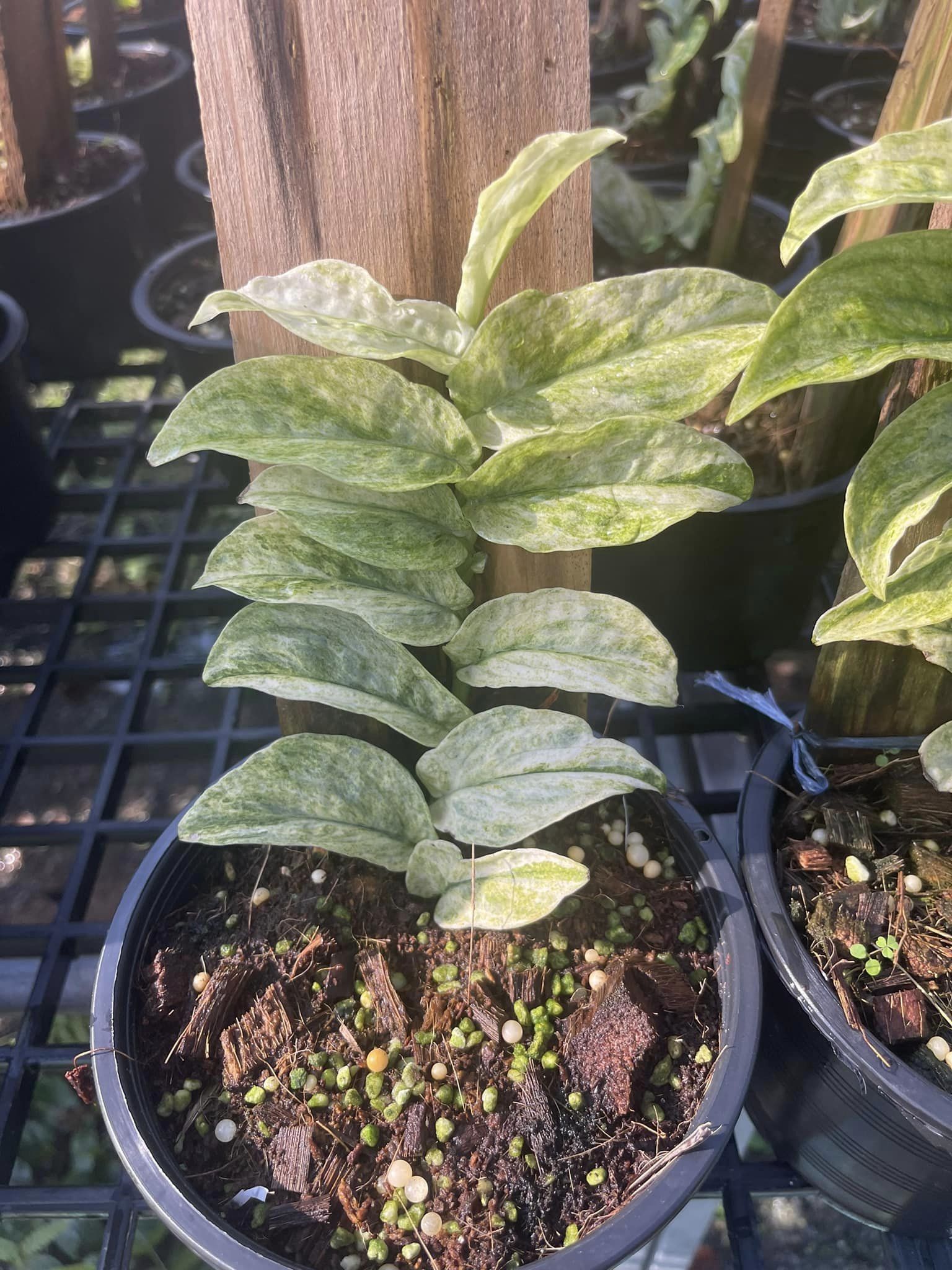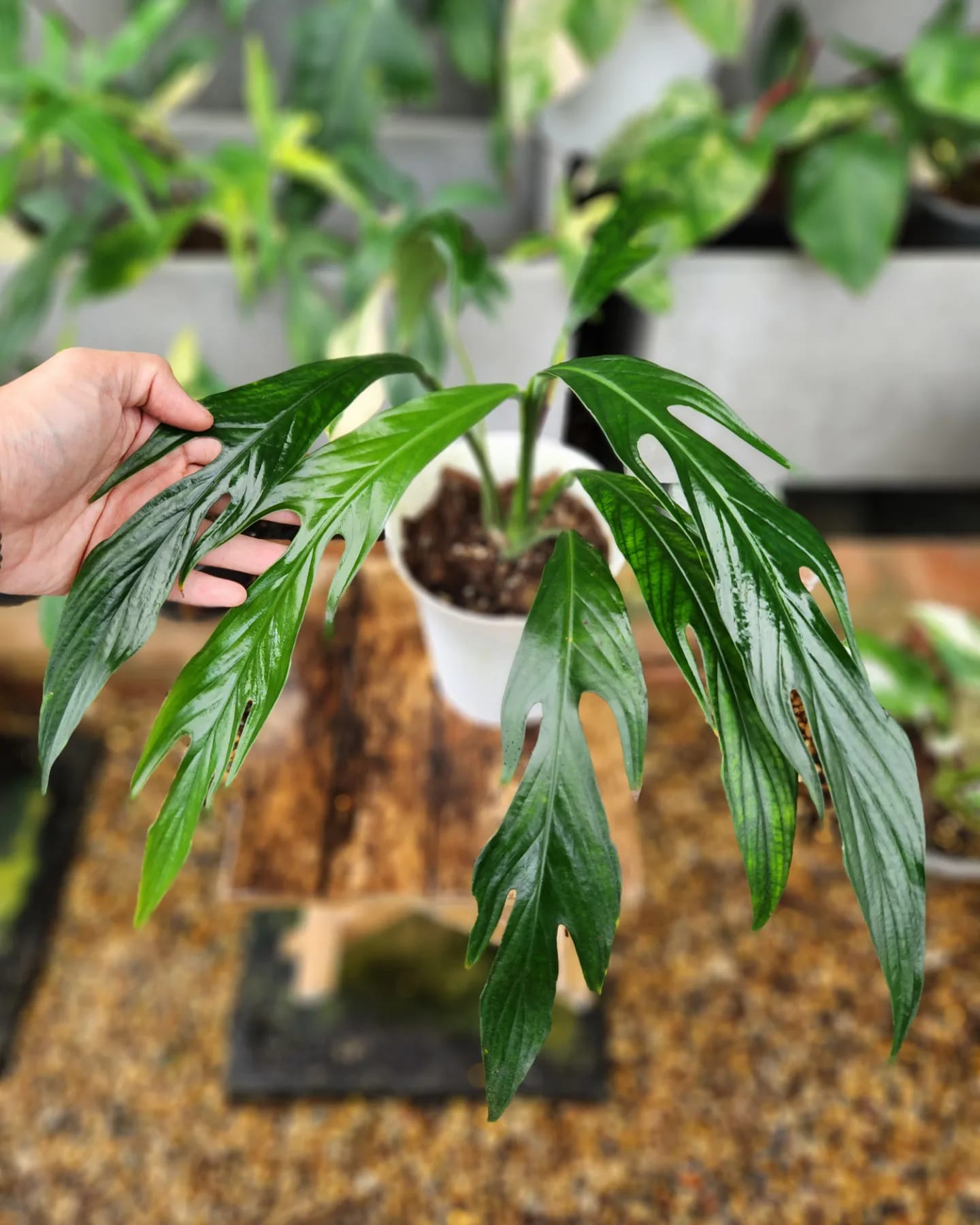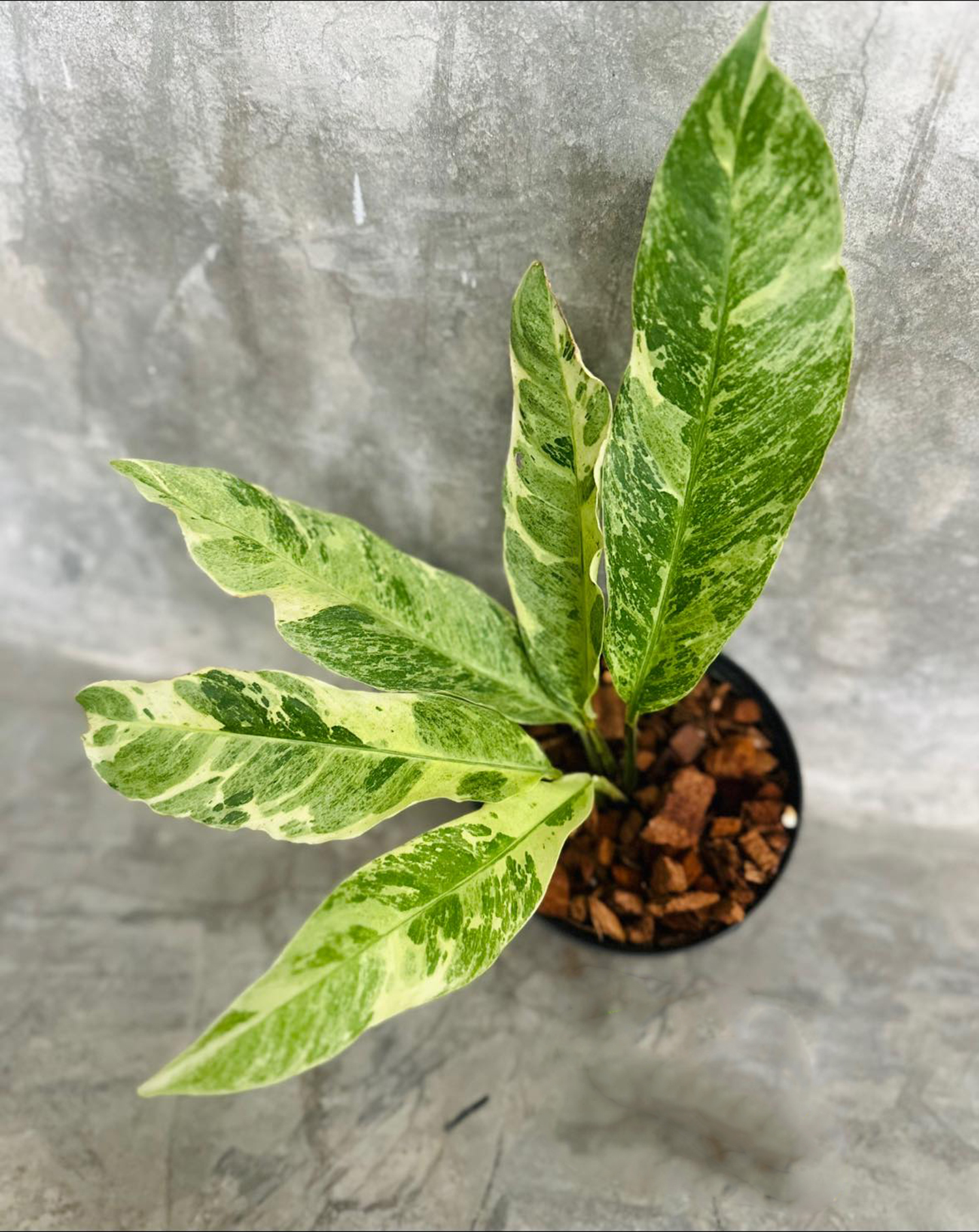Rhaphidophora is a genus of climbing aroid plants in the family Araceae. Native to tropical regions of Africa, Asia, and Australasia, these vines are characterized by their large, heart-shaped leaves and aerial roots which help them climb up trees and other supports.

Taxonomy and Relationships
Rhaphidophora is closely related to other climbing aroid genera like Epipremnum and Monstera. Recent genetic research has shown that these three genera actually form an intermingled group that may need taxonomic revision.
Molecular Research
Molecular studies of chloroplast DNA have revealed that Rhaphidophora, Epipremnum, and Monstera are paraphyletic. This means that some species assigned to each genus are more closely related to species in other genera than they are to other species in their own genus.
Implications for Classification
The paraphyly of these three genera suggests that taxonomic changes may be needed. Some species currently placed in Rhaphidophora or Epipremnum might need to be moved into Monstera or vice versa. More research is still needed to clarify relationships before making formal taxonomic revisions.
Geographic Distribution
Rhaphidophora vines grow naturally throughout the tropics in Africa, Asia, Australasia, and the Western Pacific islands. Their range spans diverse tropical ecosystems.
Africa
In Africa, Rhaphidophora species are native to rainforests and swamp forests ranging from West Africa to Madagascar and other Indian Ocean islands off the southeastern coast. Examples include R. africana found in Cameroon and R. madagascariensis endemic to Madagascar.
Asia
Numerous Rhaphidophora species occur in tropical forests across southern Asia and Malesia. This includes parts of India, southeastern China, Philippines, Malaysia, Indonesia, New Guinea, and the Solomon Islands. Some widespread Asian species are R. decursiva, R. pinnata, and R. korthalsii.
Australasia
Rhaphidophora also extends eastward into tropical Australasia and the western Pacific islands. Examples here include R. australis in northeastern Australia and New Caledonia and R. samoensis found in Samoa.

Description
Rhaphidophora vines can be recognized by a particular set of morphological features and growth habits. Some cultivated varieties have unique leaf shapes or color patterns.
Stems and Leaves
Rhaphidophora plants are evergreen climbing vines. They produce long flexible stems up to 33 feet (10 m) in length. The alternate leaves are usually heart-shaped but can also be oval or triangular. Leaves have distinct upper and lower surfaces.
Aerial Roots
A key feature of Rhaphidophora is its aerial roots which emerge from the stem. These specialized roots enable the vine to cling onto the bark of tree trunks, rocks, or other solid structures as it climbs upwards into the forest canopy searching for sunlight.
Inflorescences
The small flowers of Rhaphidophora are packed into dense inflorescences called spadices which are partially enclosed by a leaflike bract called a spathe. This type of flower arrangement is characteristic of the Araceae family.
Cultivars
There are a few unique cultivated varieties of Rhaphidophora. One popular houseplant is Rhaphidophora decursiva `Tikitiki’ which has large triangular fenestrated leaves. Rhaphidophora excelsa `Exotica’ is another cultivar grown for its slender leaves banded with gray-green and silver variegation.
A compilation of the Rhaphidophora species that are in high demand in 2023

Ecology and Adaptations
In tropical forests, Rhaphidophora vines utilize trees and rock faces to access well-lit areas high in the canopy. Their climbing growth habit and aerial roots are key adaptations to this epiphytic niche.
Climbing Growth Form
The climbing habit enables Rhaphidophora vines to ascend up tree trunks into brighter, more open areas of the canopy that are optimal for photosynthesis. Long flexible stems can extend lengthwise or laterally to spots with the best sun exposure.
Aerial Roots
Once a Rhaphidophora stem makes contact with a suitable hard surface like tree bark, specialized adventitious roots emerge which anchor the plant in place as it climbs upwards. This adaptation allows the vine to scale massive tree trunks.
Tropical Forest Canopy Epiphyte
By climbing high up into the bright, humid conditions of tropical forest canopies, Rhaphidophora and related genera can grow as epiphytes perched on the branches of canopy trees. Up in the treetops, they absorb moisture and nutrients from humid air and debris caught in aerial roots.

Uses
Ornamental Houseplants
In temperate regions, tropical Rhaphidophora vines like R. decursiva `Tikitiki’ and R. excelsa `Exotica’ are cultivated as unusual ornamental houseplants. Their large, exotic leaves and vining growth habit make them attractive indoor plants given proper moisture, light, and support structures.
Traditional Medicines
Some Rhaphidophora species are used in traditional plant-based medicines in southeast Asia for treatments ranging from wound healing to post-partum recovery treatments. However, research is still lacking on efficacy and safety of these traditional remedies.
Conclusion
As a genus of climbing vines in the Araceae family, Rhaphidophora is adapted to growing as epiphytes high up in steamy tropical forest canopies. They climb upwards on tree trunks using long flexible stems and specialized clinging aerial roots. Taxonomically they are closely interrelated with other aroid climbers like Epipremnum and Monstera. Beyond their native habitats, distinctive Rhaphidophora cultivars are also grown as ornamental houseplants worldwide.
FAQ
- What is the Rhaphidophora Family?
- The Rhaphidophora Family is a group of tropical and subtropical plants known for their lush foliage and distinctive growth patterns. They are popular among plant enthusiasts for their unique leaves and air-purifying qualities.
- What are some common Rhaphidophora species?
- Common Rhaphidophora species include Rhaphidophora tetrasperma (Mini Monstera), Rhaphidophora decursiva, and Rhaphidophora hayi. Each species has its own characteristics and care requirements.
- How do I care for Rhaphidophora plants?
- Rhaphidophora plants thrive in bright, indirect light and well-draining soil. They prefer high humidity levels and regular watering, allowing the soil to partially dry between waterings. Fertilize them during the growing season for optimal growth.
- Are Rhaphidophora plants easy to propagate?
- Yes, Rhaphidophora plants are relatively easy to propagate. You can propagate them through stem cuttings, which can be placed in water or directly in soil. With proper care, these cuttings will develop roots and grow into new plants.
- Do Rhaphidophora plants require a lot of space?
- Rhaphidophora plants can vary in size, but many are suitable for indoor spaces and can be kept as houseplants. Some species can grow quite large if given the space, while others, like Rhaphidophora tetrasperma, have a more compact growth habit, making them suitable for smaller areas.
See more Discover the Fascinating World of Species Rhaphidophora

